Weekly Recap:
US Global stocks recap
Global markets were hit by another bout of volatility last week. Risk assets sold off again last week amid persistent AI valuation concerns and ambiguity over the Federal Reserve’s next steps. The tech-heavy Nasdaq led the declines, dropping 2.7%, while the S&P 500 and the Dow Jones Industrial Average fell 1.9%. The USD rose 0.9% last week, briefly rising to a 6-month high.
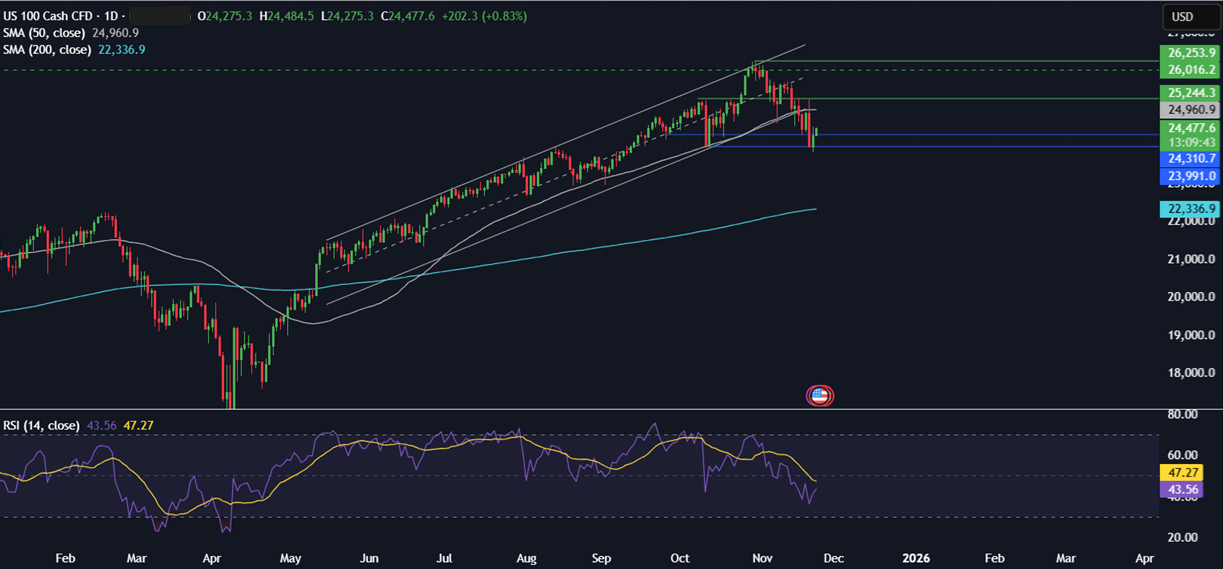
Major US data/themes
Interestingly, Nvidia’s impressive earnings report and the upbeat commentary from its CEO failed to sustainably reverse negative momentum, and investors continue to question rallies in firms seen as AI leaders and their investment announcements. Should AI-related concerns continue, it would be difficult for risk assets to rally meaningfully.
Beyond AI, the minutes to the FOMC were more hawkish, sending December rate-cut expectations to 27% from 90% ahead of the October meeting. Policymakers highlighted a lack of recent data as an obstacle to further rate cuts. However, the NY Federal Reserve President John Williams on Friday adopted a more dovish tone, sending rate cut expectations sharply higher to over 70% once again.
The US Thanksgiving holiday this week means volumes will likely be thin.
Gold moves
After substantial gains two weeks ago, XAU/USD traded within a tight range last week above $4050. Uncertainty over the Federal Reserve’s next move has kept traders on the sidelines. Fed December rate cut expectations dropped sharply to 25% before rebounding to 77%. Gold performs better in low-interest-rate environments as the opportunity cost of holding non-yielding gold falls. Still, recent USD strength could keep gains in the precious metal limited. This week, US retail sales and consumer confidence data could influence XAU/USD prices. However, the holiday-shortened week could keep volumes thin and movement range-bound.
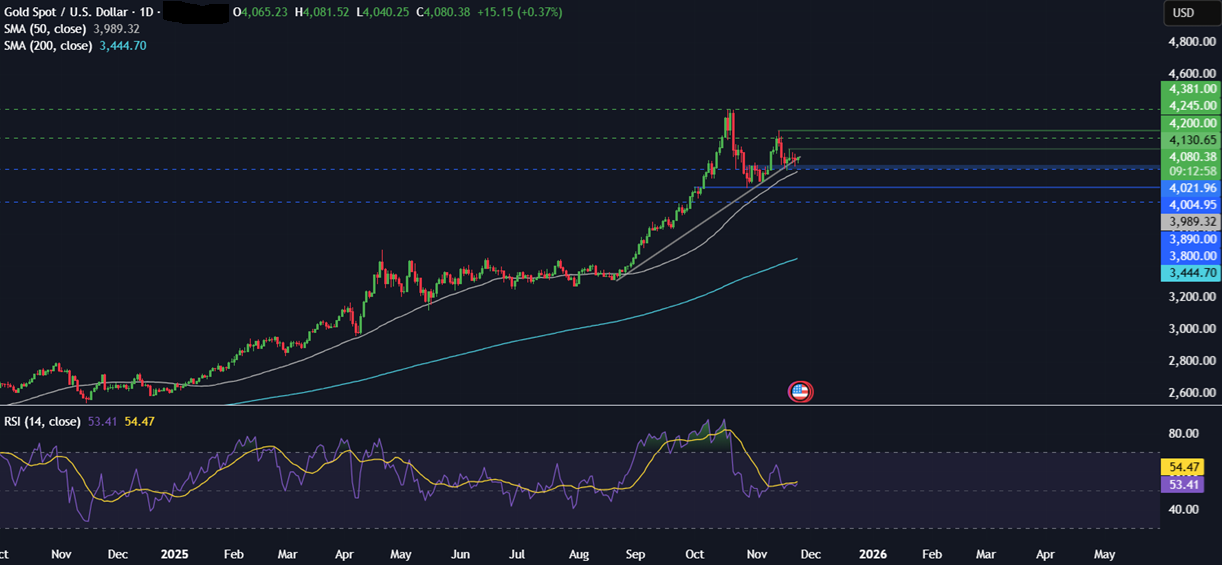
Oil moves
Oil prices fell sharply last week, dropping 3.5% to a low of $57 per barrel. The oil price tumbled to a month’s low last week after the US pushed for a Russia–Ukraine peace deal, which could boost global oil supplies while removing a risk premium. A peace deal would allow Russia to export more fuel. Russia was the second-largest exporter after the US in 2024. However, an agreement is far from certain. Any developments on a peace deal could influence oil prices. A stronger USD also weighs on oil prices, as did news that US manufacturing activity slowed to a four-month low. Looking ahead to this week, attention will be on Chinese industrial profit figures for clues on the health of the economy for the world’s largest oil importer.
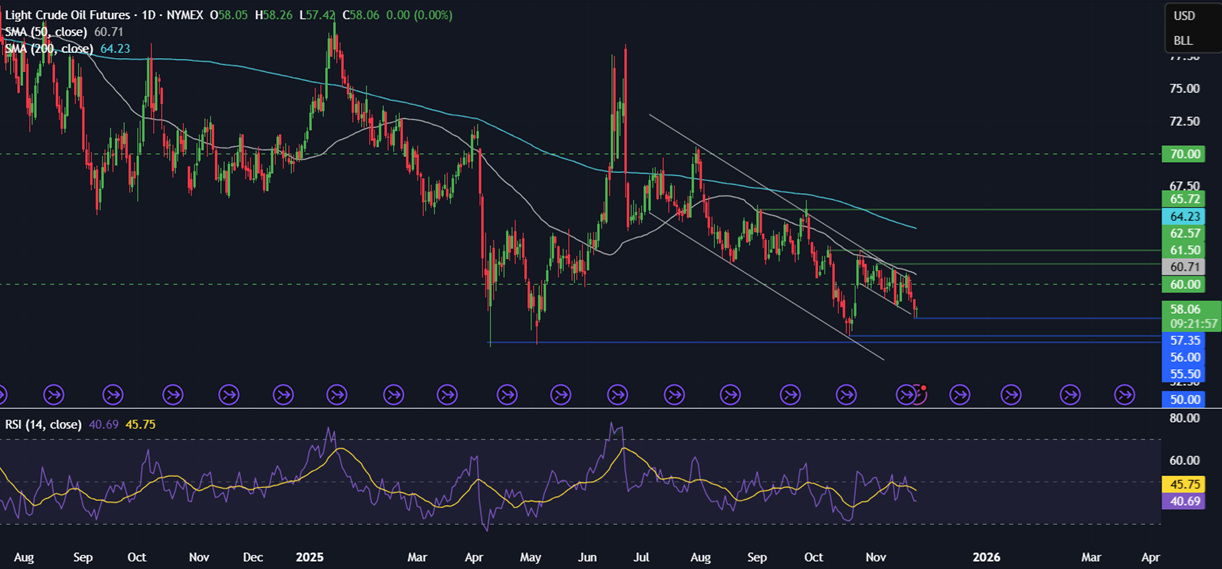
Indian markets
Indian markets gained for a second straight week, with the Nifty rising 0.6% above 26,000. However, the India VIX surged by over 14% reflecting growing concerns amid global and domestic uncertainties. The tech bubble and Fed uncertainty created mixed global cues. Domestically, delays in the Indian-US trade deal and a weaker Rupee were offset by resilient corporate earnings, which supported investors’ sentiment.
Foreign Institutional Investors (FIIs) continued their selling streak, offloading equities worth Rs 188 crore over the past week, despite intermittent buying. In November, FIIs have sold Rs 3,788 crore, reinforcing the trend of sustained foreign outflows.
In contrast, Domestic Institutional Investors (DIIs) have once again proved to be a strong support. These inflows offset the FIIs’ withdrawals.
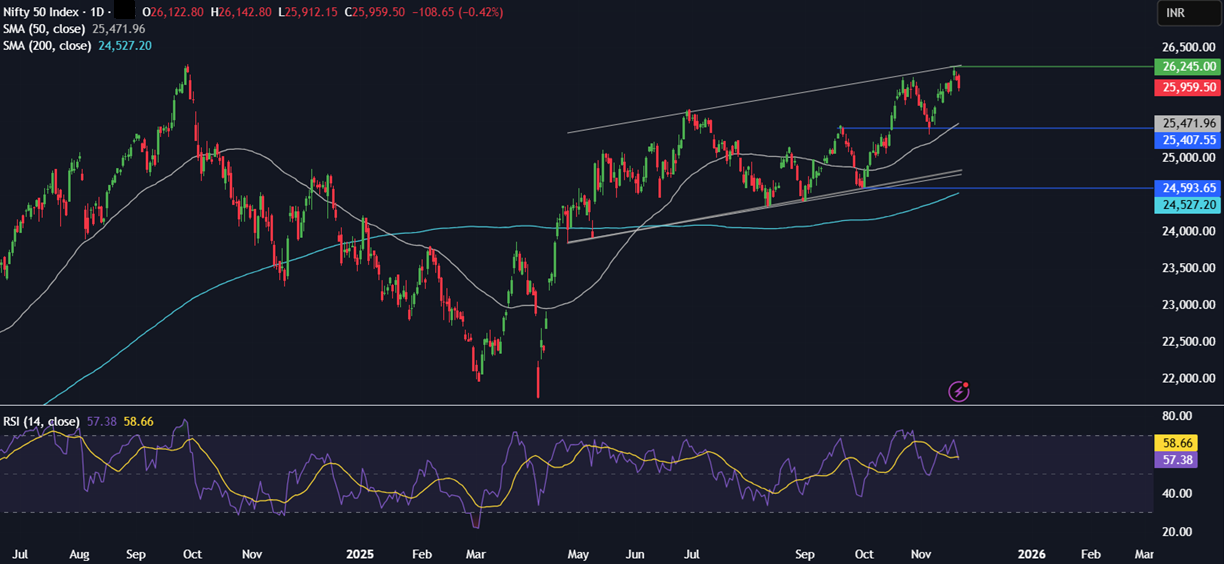
Data last week showed Indian business activity slowed to a six-month low in November, as manufacturing activity slipped to a nine-month low, offsetting a rise in services activity. The HSBC India composite PMI was 59.9, down from October’s 60.4 and slightly below the 60.1 economists expected. While this is still comfortably above the 50 level, which separates expansion from contraction, a third straight monthly decline suggests India’s economy is losing momentum.
USD/INR rose 1.07% last week, settling at 89.64 on Friday, a record high. The pair is falling at the start of the new week.
Pakistan markets
The KSE 100 rose 0.1% last week as the index consolidated following the impressive 2.5% rally the previous week—sector-specific developments and encouraging data supported market sentiment. Large-scale manufacturing industries in Pakistan posted modest growth across the July to September quarter. FFC led gains following its inclusion in the KMI-30 index.
Macroeconomic data showed the current account deficit widened to $733 million in the first four months of FY26.
Looking ahead, the biggest driver of the KSE 100 will likely be progress or disappointment on the IMF findings. Political stability is helping, but fiscal and external risks remain significant wild cards. If the IMF tranche goes through, the market could rally further; if not, it might face renewed volatility. 8 December is a key date for Pakistan, when it is expected to receive a $1.2 billion disbursement.
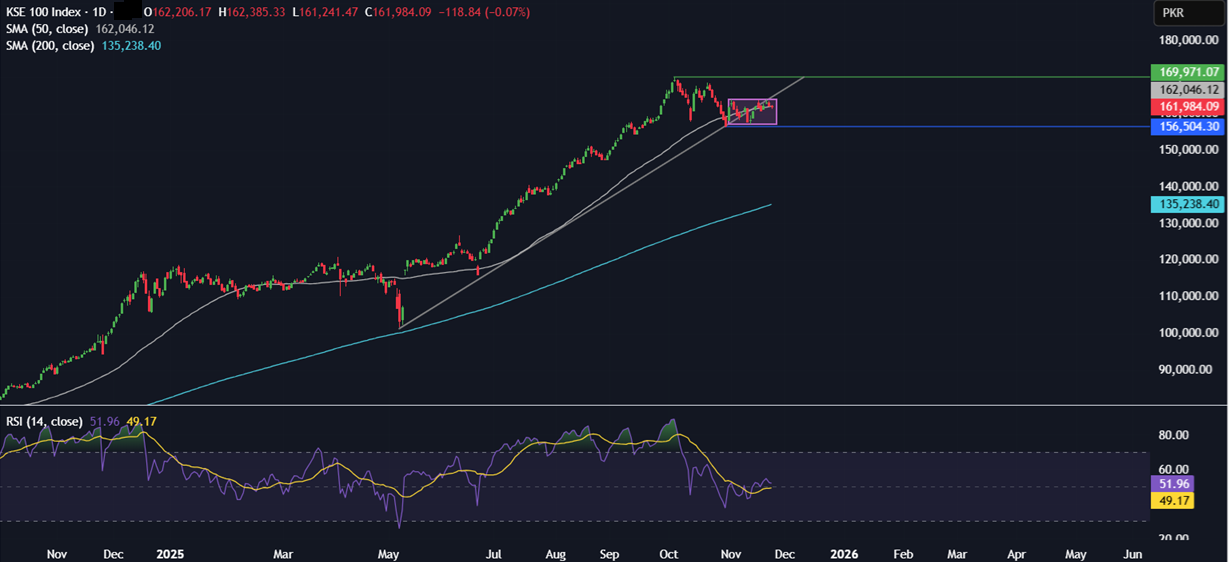
USD/PKR was unchanged last week to settle at 282.67 on Friday, after four straight weeks of declines.
Week Ahead (focus US & Asia)
Indian-US trade talks
US-India trade talks will remain a key driver of sentiment and foreign investor flows, though India is showing no hurry to rush a deal through. A strong domestic economy and a smaller-than-expected hit to exports give New Delhi more room to negotiate a trade deal with Washington. Indian exports to the US dropped 8.6% year on year to $6.3 billion in October, the second month that a 50% tariff on imports from the country is in place. This was significantly lower than the 12% drop in September. Indian officials have publicly maintained that they will not rush to sign a deal. Some sectors, such as textiles, have reported a larger fall in US orders; however, the overall impact on the economy remains limited. Finalisation of a deal could send sentiment and Indian stocks sharply higher.
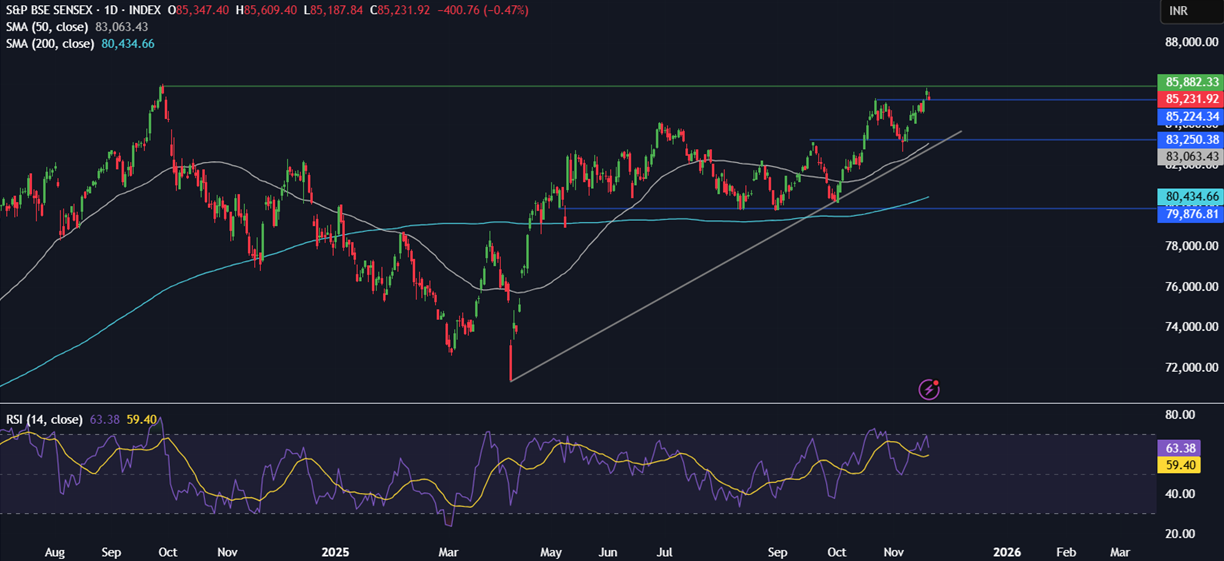
US Retail Sales (Tuesday)
The delayed September retail sales are scheduled for Tuesday, 25 November, just ahead of Black Friday, one of the busiest shopping days of the year, and will show whether shoppers maintained their momentum heading into the government shutdown. Expectations are for sales to rise 0.4% MoM, down from 0.6% MoM in August. Solid retail sales will be viewed as a gauge of consumer strength and are expected to cap off a strong quarter of spending despite sticky inflation and some anxiety about job security. The data comes after Friday’s data showed that consumer sentiment fell in November to one of the lowest levels on record. The University of Michigan sentiment drops to 51 in November as consumers remained frustrated by the persistence of high prices and weakening incomes. So far, deteriorating confidence hasn’t translated into weaker sales. Solid retail sales could boost the USD. The US Conference Board Consumer Confidence will also be released.
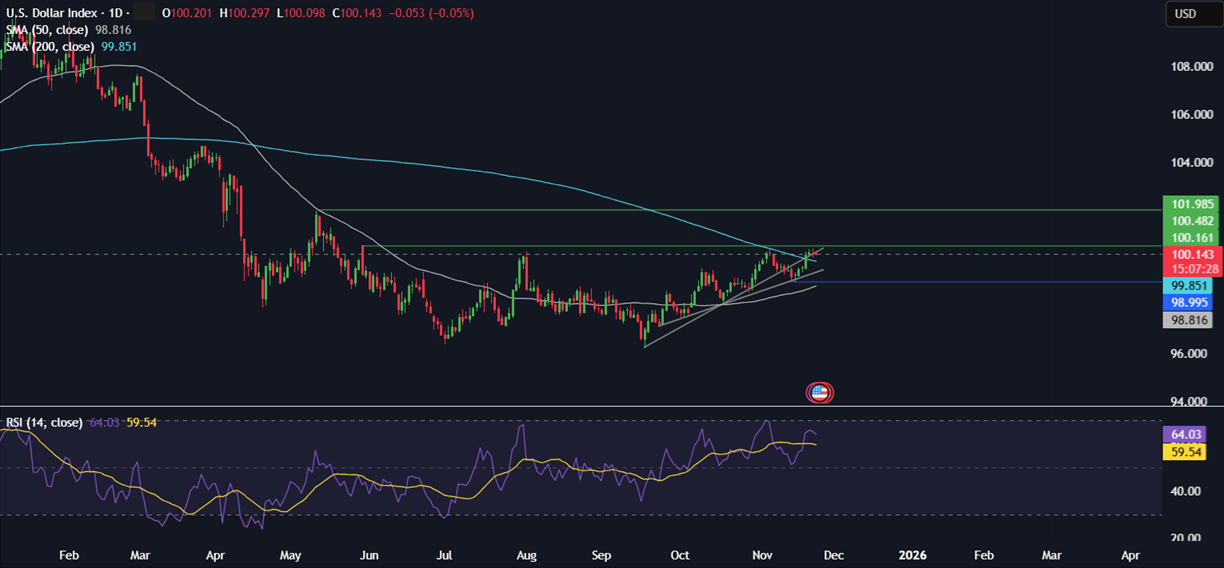
Tokyo CPI (Thursday)
In October, the CPI rose to 2.8% YoY, up from 2.5% in September, marking a stronger-than-expected rise in prices. This month’s data comes after massive stimulus efforts and mixed messages from BoJ Governor Ueda on when the central bank could hike rates again. The yen fell to a 10-month low last week after PM Takeichi’s cabinet announced stimulus plans of around $135 billion, the largest since 2022. Japanese bond yields have surged amid concerns about the country’s fiscal credibility. The yen has fallen 6% since PM Takaichi took office less than two months ago. The Japanese Finance Minister, Katayama, has warned verbally of intervention to support the yen. Even a surprise upside to Tokyo CPI may not be enough to support the yen and pull USD/JPY lower.
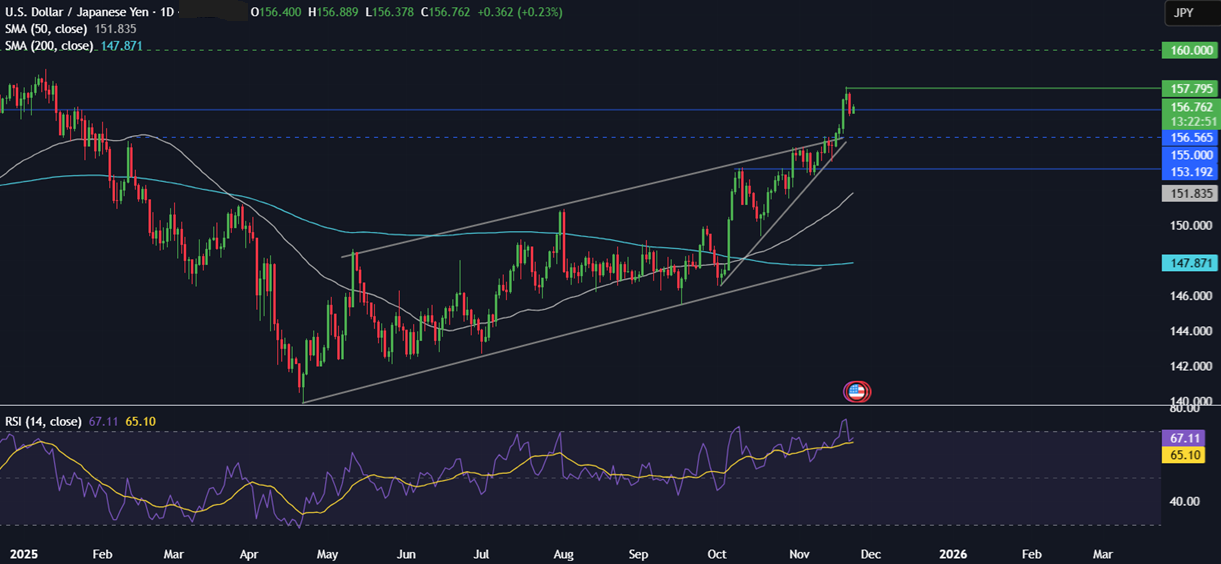
Indian Q2 GDP (Friday)
The National Statistics Office will release official GDP data for the July to September quarter of FY2025-26. Economists are expecting growth of 7.2%, but some expect it to be higher at 7.5% due to a consumption boost following the goods and services tax rate cut. The Reserve Bank of India projected second-quarter GDP growth at 7%. According to the State Bank of India, leading indicators of consumption and demand across the agriculture, industrial, and service sectors have accelerated in the second quarter. Based on those estimates, they expect GDP to come in stronger than expected. However, risks exist from volatile global commodity markets and potential spillover from trade disruptions. Upbeat growth data could lift the Rupee and Indian stock markets.
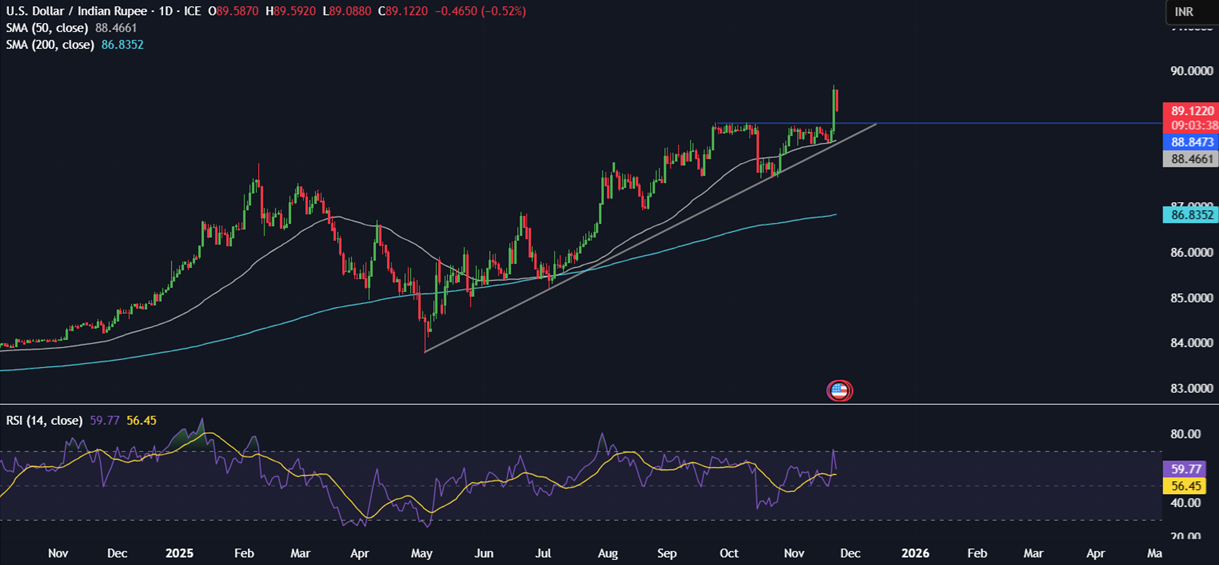
Trading involves risk.
The content provided here is for informational purposes only. It is not intended as personal investment advice and does not constitute a solicitation or invitation to engage in any financial transactions, investments, or related activities. Past performance is not a reliable indicator of future results.
The financial products offered by the Company are complex and come with a high risk of losing money rapidly due to leverage. These products may not be suitable for all investors. Before engaging, you should consider whether you understand how these leveraged products work and whether you can afford the high risk of losing your money.
The Company does not accept clients from the Restricted Jurisdictions as indicated in our website/ T&C. Some services or products may not be available in your jurisdiction.
The applicable legal entity and its respective products and services depend on the client’s country of residence and the entity with which the client has established a contractual relationship during registration.




